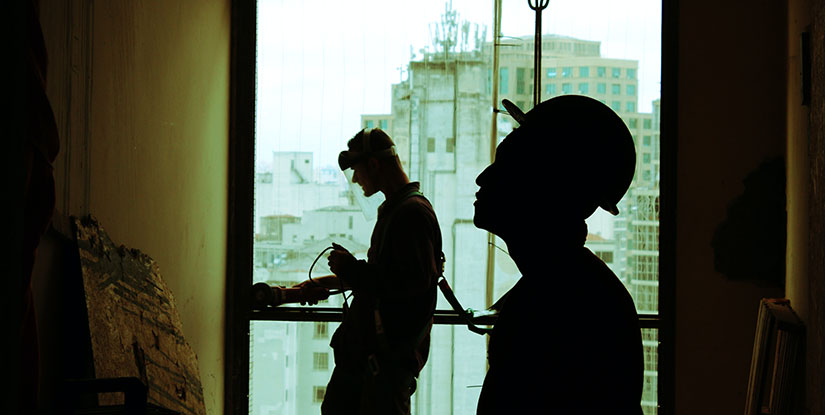The topic of building preventative maintenance is one that is usually ignored until problems arise and repair activities are needed. Waiting to perform maintenance activities can add even more costs to an already over-extended budget.
In order to better track a commercial building’s maintenance requirements, managers should consider the use of a building preventative maintenance program. This program can act as a plan that includes a service schedule template, a list of any components that require repair, and a way to track when each of these tasks is performed.
Why Preventative Building Maintenance is Important
Building preventative maintenance is one of the easiest ways to keep your property looking beautiful. In addition to beautifying your building, preventative maintenance helps to keep customers and tenants safe as well as minimize the amount of money spent on unnecessary, avoidable repair costs.
When preventative maintenance is performed and your building is kept looking great, it can help attract new business and add to the overall value of the property. A well-maintained property will be in compliance with the local building code, helping you to avoid fines and fees.
Preventative maintenance is predictive in nature. It takes into account all of the moving parts of a building, high traffic areas, and the places that receive a lot of wear and tear, which can potentially pose a safety risk to your staff, tenants, or clients.
Having a regular schedule to service these areas allows you to see what problems are likely to arise in the future, take corrective action, and avoid many of the costs associated with hiring a third-party company to makes repairs. Being able to predict maintenance issues allows you to keep everyone safe, which can help avoid injuries and the negligence lawsuits that often stem from them.
Tasks to Keep in Mind For Proper Building Maintenance
Preventative maintenance requires a watchful eye over many facets of your property. You’ll need to consider many types of activities to keep your building up to code and standard. These tasks may include:
- Roofing repairs and inspection
- Cleaning and inspecting gutters
- Changing air filters
- Yearly servicing of HVAC systems
- Repairing dings and dents in walls or other surfaces
- Deep cleaning carpets and other high traffic areas
- Cleaning, inspecting, and servicing escalators or elevators
- Replacing lightbulbs,
- Inspecting plumbing fixtures
- Ensuring routes of egress are free from debris
- Checking that all locks work
This list is far from exhaustive but gives you an idea of the types of tasks that may be included in your maintenance plan. Each building is different and will require a slightly varied routine or set of activities. However, the goals are the same: ensure the overall maintained aesthetic and keep people safe – both of which lead to cost savings!
Managing Your Building’s Preventative Maintenance Program
Often, a building preventative maintenance program begins during the normal cleaning process or during other routine services. Something is noticed – be it a chirping fire alarm with a dead battery, dirty escalator treads, or an air conditioner producing warm air because of a dusty filter.
This issue is noted and the required services are performed. From there, an owner, manager, or building engineer may put it on their monthly or weekly checklist to ensure that the issue is continually addressed or completely solved. As issues are noted, they are added to the list.
If your checklist becomes too long and there isn’t a true preventative maintenance program in place, tasks can be forgotten or ignored. This is why it’s important for a policy to be in place about how to build and implement a building preventative maintenance plan.
Your preventative maintenance plan should have ways to track and monitor any needed repairs, the technician or engineer who performed them, and the total cost of the job. You’ll also be able to see when areas of your building were last inspected and what was types of problems were found, if any.
The best way to manage each of these components is by having a system of checks and balances. When a task is performed, another team member or a manager should be able to verify that it was completed. If no manager is available, photos uploaded from a mobile device can help show that the item on the list was addressed.
When a follow-up is needed, managers should be able to glance at the checklist, see the employee responsible for its completion, and ensure that the maintenance task or repair has been done or the needed service has been scheduled.
Depending on the needs of your building, you may also wish to incorporate the use of work orders to ensure that any major maintenance or repair task is both assigned to a specific employee and completed. This helps to avoid passing the blame from one person to the next if there is ever a question about when or how the maintenance was completed.
Help Your Building to Shine
If you are learning how to build and implement a building preventative maintenance checklist It is wise to learn about every tool that can make your job easier.
One of the many tools available to help improve your preventative maintenance efficiency is the Escateq tread, riser, and handrail cleaner. These tools allow almost anyone the ability to clean an entire escalator or moving sidewalk in as little as a few moments, giving you more time to focus on larger maintenance tasks.
If you would like to learn how this helpful cleaning tool works or to order this cleaning tool, give Escateq a call today! We can send out hand measuring tools to ensure you receive the best-fitting tool.


